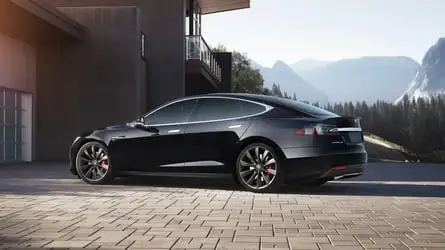
Tesla played a pivotal role in pushing the automotive industry towards electric vehicles, with the Tesla Model S being a significant contributor. Debuting in 2012, the Tesla Model S has seen numerous substantial updates, maintaining its status as a cutting-edge, full-size electric sedan with impressive technology and performance.
Nevertheless, it no longer holds the top spot in its class, as competitors now surpass it in various aspects except for semi-autonomous driving. Tesla’s Full Self Driving, despite not being fully perfected or ready for mass deployment, remains more advanced and practical than offerings from other manufacturers. The Lucid Air Sapphire has overtaken the Model S Plaid as the fastest electric sedan globally, and the Porsche Taycan Turbo GT outperforms it on the track. Additionally, the standard Lucid Air offers better efficiency and a longer range.

If Tesla operated like a conventional car manufacturer, the Tesla Model S would likely have been discontinued years ago. However, Tesla’s unique approach to the automotive industry, which differs significantly from its competitors, is a key factor in its rapid rise to prominence. Traditional automakers rarely keep a sedan model in production for 12 years, but Tesla’s strategy is different. Despite the Model S having relatively low sales figures compared to the Model Y and Model 3, Tesla continues its production. Although there has been no official announcement regarding a new Tesla Model S, various hints indicate that an update might be on the horizon.
Reflecting on the Legacy of the Tesla Model S


Development for the Tesla Model S began before 2007, with its first concept revealed in 2009. The production model, which debuted in 2012, closely followed the sporty and luxurious design of the concept, echoing the aesthetics of Jaguar and Maserati while delivering matching performance. It was a visually appealing departure from previous EVs, challenging the perception that electric vehicles were unattractive and sluggish.
In 2015, Tesla introduced significant updates to the Tesla Model S, including new battery packs and powertrain enhancements. All Tesla Model S variants boast impressive speed, but the P100D variant, launched in 2016, stands out. With ‘P’ denoting “Performance,” this model could produce up to 762 horsepower in “Ludicrous” mode, propelling the car from 0 to 60 mph in about 2.5 seconds.

The sub-3-second sprint time made the Model S the world’s quickest-accelerating production car at that time, converting many skeptics to acknowledge the performance capabilities of EVs. Regardless of a preference for high-octane fuel, the impressive numbers were hard to dismiss. Tesla later unveiled “Ludicrous Plus” mode with a dedicated launch feature, further reducing the 0 to 60 mph time to 2.3 seconds.
In 2021, Tesla introduced the current version of the Model S, featuring updated exterior elements such as refreshed fascias and light clusters, along with a more modern interior. A significant change inside was the new landscape screen, replacing the original 17-inch portrait display. This refresh also introduced the fastest Tesla Model S variant to date, the Plaid, and the controversial yoke steering wheel.
New Tesla Platform

Tesla is reportedly developing an all-new electric vehicle based on a new platform, internally named “Redwood.” This upcoming crossover is anticipated to launch next year. During an earnings call in January, Elon Musk confirmed that the first vehicle from this next-generation line will begin production at the Giga Texas plant in Austin by mid-2025, likely referring to Project Redwood.
This new platform, designated as “NV9X” internally, will not be limited to a single vehicle. According to a Reuters report, at least two additional models will utilize this next-gen platform. It’s reasonable to expect that the platform will support a variety of vehicle types, not just compact and affordable models, but also larger, more luxurious vehicles like the Model S.
Although the Tesla Model S remains visually appealing, it hasn’t undergone a significant design overhaul since 2016. A fresh design, coupled with a new platform offering improved efficiency, range, and performance, could greatly enhance its appeal, leveraging the model’s established reputation and loyal fan base.
Rising Stars Among Competitors



When the Tesla Model S was first introduced, it had no direct competitors and stood out as a unique option among the EVs of its time. However, the landscape has changed significantly, with numerous electric sedans now available that surpass the Model S in speed, efficiency, and range. Luxury electric sedan buyers can now choose from models like the BMW i5, the all-electric version of the new BMW 5 Series, the Mercedes-Benz EQE, a custom E-Class-sized model, and the Porsche Taycan, which appeals to driving enthusiasts.
Despite the increased competition, Tesla is unlikely to relinquish its position in the electric sedan market, a segment it once dominated. Although the Model S doesn’t sell in high volumes, Tesla sold nearly 69,000 Model S sedans and Model X SUVs combined in 2023, compared to 1.74 million combined sales of the Model 3 and Model Y. The market for high-end electric sedans is smaller and highly competitive, but a completely redesigned Model S could make a significant impact.
Tesla has never introduced an entirely new second-generation model to replace an existing vehicle in its lineup. The closest it has come is with the Roadster, which has faced significant delays. It seems Tesla may be hesitant to assert its market dominance with a second-generation Model S, especially considering Elon Musk’s apparent waning interest in electric car production and his focus on other ventures. Ending the Model S legacy with the first-generation model would be unfortunate, given its influential role in the electric vehicle revolution.

